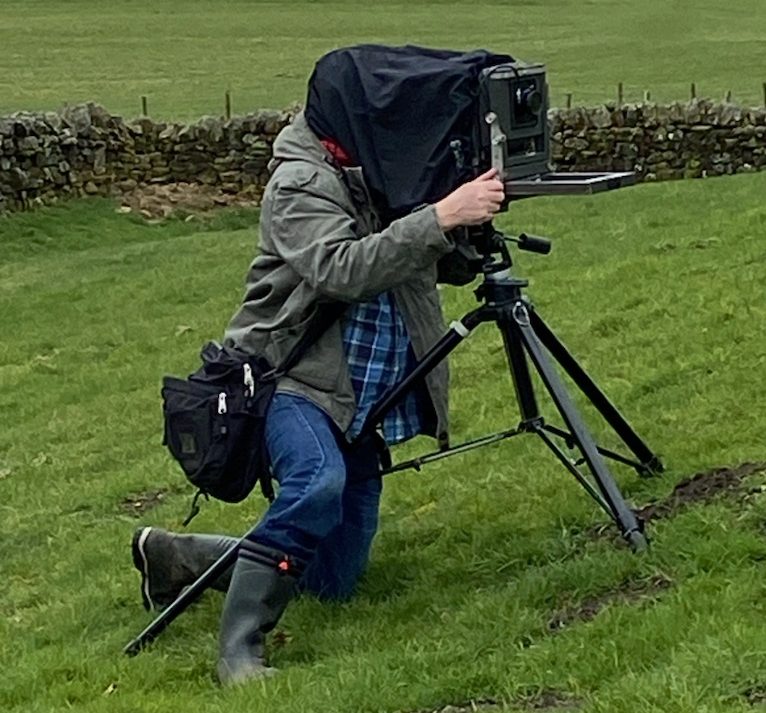Back in June I took a trip to Gunnerside, a side-dale off Swaledale in North Yorkshire. I showed a few shots taken whilst walking with a Mamiya RZ67 here.
When I returned to the car I had enough time left to take out the Canon EOS300 for a short walk with a Canon 28-105 zoom lens which I had recently purchased with a view to, possibly, taking the camera and zoom lens as my only camera on a family trip to Rome.
The camera was loaded with Agfa Vista 200 film (aka “Poundland film”) which I developed in Firstcall C41 chemicals.

However, this blog post is not a lens test. To cut a long story short:
- The lens worked fine, apart from a problem with the lens hood
- I just decided that autofocus lenses and zoom lenses didn’t “spark joy” for me
- Since then I’ve sold my remaining Canon EF lenses.
The lens hood vignetted very badly at the wide end of the zoom range, like this:

Now it’s not uncommon to have difficulty in finding a lens hood that works well with a wide angle lens … and if it worked well at 28mm then it would probably offer precious little protection at the 105mm end. If this had been a third-party offering I would have shrugged it off and tried to remember to remove the lens hood when shooting at the wide end.
But this lens hood is an official Canon hood which is supposed to be compatible with the 28-105 lens, so I was a little disappointed with Canon.
Having got that off my chest, I may as well post a few of the pictures I took with the lens on that day.











Sharp-eyed readers will notice that I said I used colour film but these are all mono images. I converted them in Adobe Lightroom, mainly because I just liked them better in mono, but also because I find it’s more difficult to achieve a consistent look to a variety of colour images. Converting to mono seems to tie all the images together in some way. As time goes on, I find that the proportion of my images which are in mono is increasing.
Converting colour images to mono in Lightroom is very convenient because you can adjust the way the colours are translated into grey tones “on the fly”. It’s like having yellow, orange, green, and red filters all available at the same time. On the other hand, I can’t produce a mono silver gelatin print from a colour negative – I need a mono negative to do that. Since a Nova darkroom tent has just been delivered today, I plan to spend a fair bit of time producing darkroom prints over the next few months.
